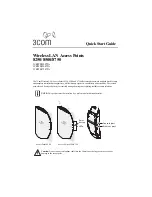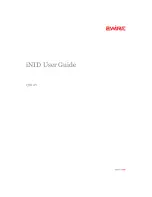
VigorSwitch G1260 User’s Guide
58
1.
At the initial stage, the supplicant A is unauthenticated and a port on switch acting as
an authenticator is in unauthorized state. So the access is blocked in this stage.
2.
Initiating a session. Either authenticator or supplicant can initiate the message
exchange. If supplicant initiates the process, it sends EAPOL-start packet to the
authenticator PAE and authenticator will immediately respond EAP-Request/Identity
packet.
3.
The authenticator always periodically sends EAP-Request/Identity to the supplicant for
requesting the identity it wants to be authenticated.
4.
If the authenticator doesn’t send EAP-Request/Identity, the supplicant will initiate
EAPOL-Start the process by sending to the authenticator.
5.
And next, the Supplicant replies an EAP-Response/Identity to the authenticator. The
authenticator will embed the user ID into Radius-Access-Request command and send it
to the authentication server for confirming its identity.
6.
After receiving the Radius-Access-Request, the authentication server sends
Radius-Access-Challenge to the supplicant for asking for inputting user password via
the authenticator PAE.
7.
The supplicant will convert user password into the credential information, perhaps, in
MD5 format and replies an EAP-Response with this credential information as well as
the specified authentication algorithm (MD5 or OTP) to Authentication server via the
authenticator PAE. As per the value of the type field in message PDU, the
authentication server knows which algorithm should be applied to authenticate the
credential information, EAP-MD5 (Message Digest 5) or EAP-OTP (One Time
Password) or other else algorithm.
8.
If user ID and password is correct, the authentication server will send a
Radius-Access-Accept to the authenticator. If not correct, the authentication server will
send a Radius-Access-Reject.
9.
When the authenticator PAE receives a Radius-Access-Accept, it will send an
EAP-Success to the supplicant. At this time, the supplicant is authorized and the port
connected to the supplicant and under 802.1x control is in the authorized state. The
supplicant and other devices connected to this port can access the network. If the
authenticator receives a Radius-Access-Reject, it will send an EAP-Failure to the
supplicant. This means the supplicant is failed to authenticate. The port it connected is
in the unauthorized state, the supplicant and the devices connected to this port won’t be
allowed to access the network.
10.
When the supplicant issue an EAP-Logoff message to Authentication server, the port
you are using is set to be unauthorized.
The 802.1X “Enabled” is the type of authentication supported in the switch. In this mode,
for the devices connected to this port, once a supplicant is authorized, the devices
connected to this port can access the network resource through this port.
802.1x Port-based Network Access Control function supported by the switch is little bit
complex, for it just support basic “Enabled” mode, which can distinguish the device’s
MAC address and its VID. The following table is the summary of the combination of the
authentication status and the port status versus the status of port mode, set in 802.1x Port
mode, port control state, set in 802.1x port setting. Here Entry Authorized means MAC
entry is authorized.
Port Mode
Port Control
Authentication
Port Status
Disable
Don’t Care
Don’t Care
Port Uncontrolled
Enabled Auto
Successful
Port
Authorized
















































